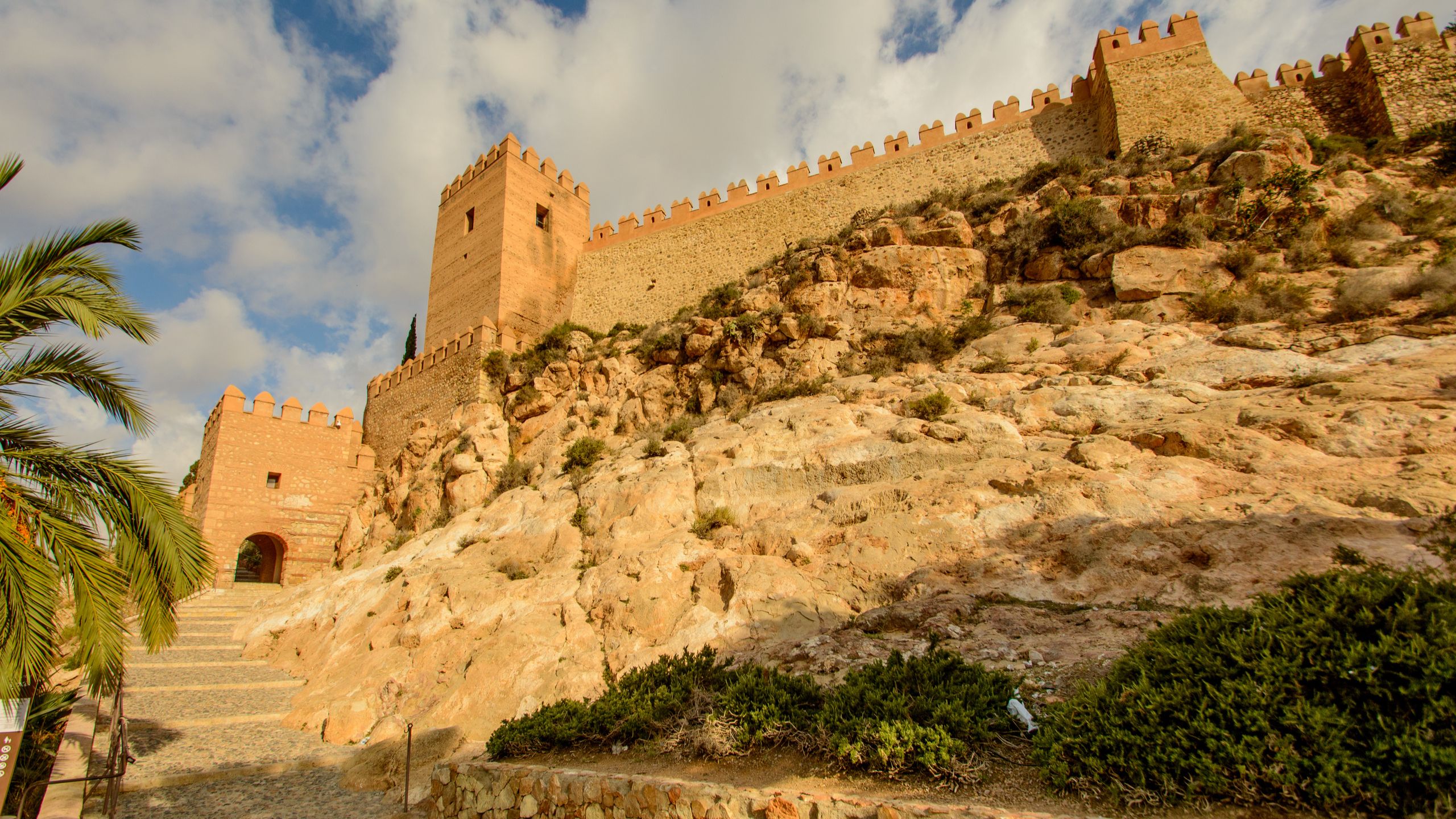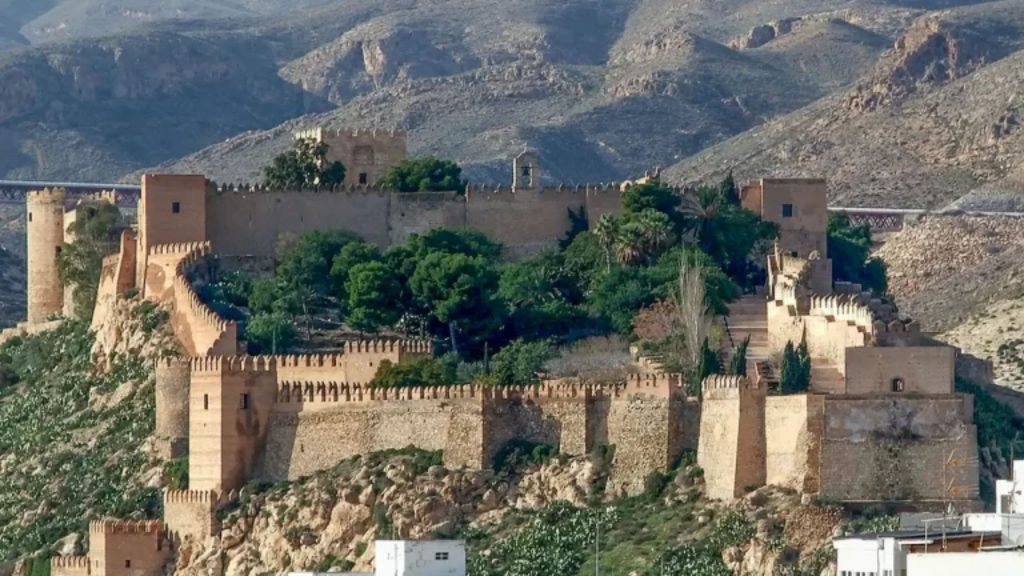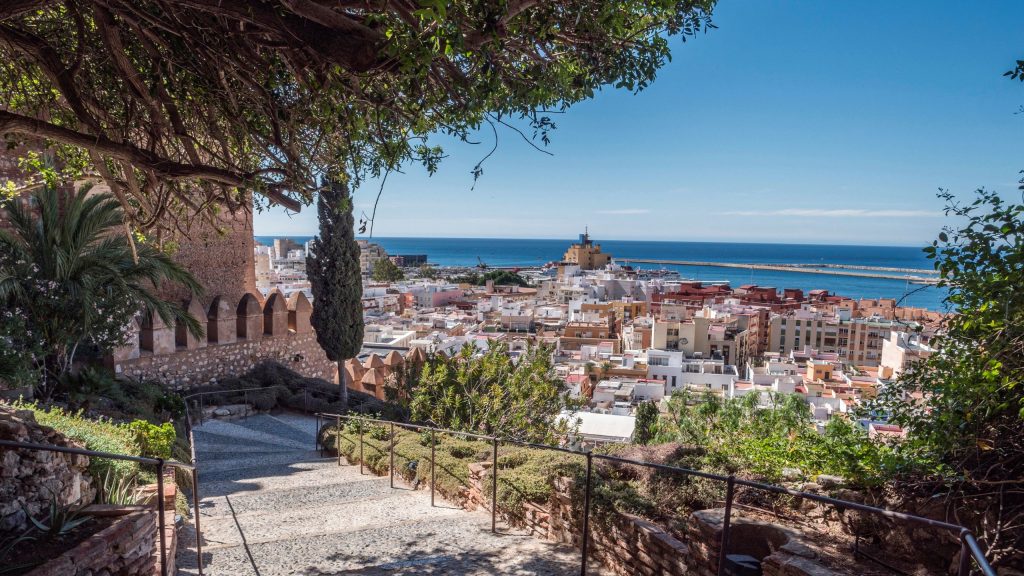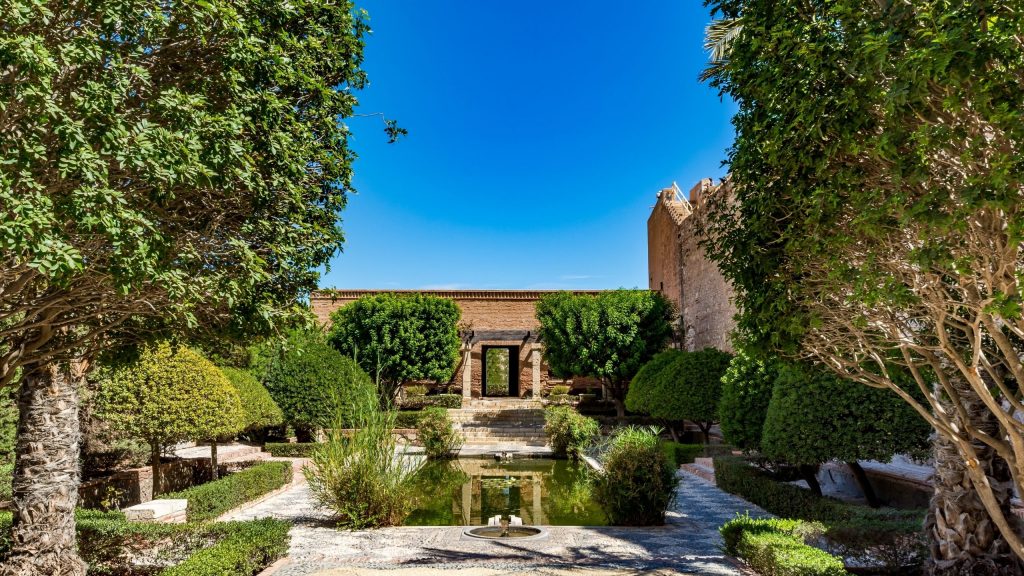
The Alcazaba of Almería: the origin of a city.
History of The Alcazaba of Almeria
Traditionally, the chosen location for Almería by the different civilisations was settled further north around the old Andarax river. This strategic position, hidden under the cover of long mountain chains, allowed them to not be seen from the sea; where most of the danger lurked, but also the opportunities. Only 140 km separates Almería from Africa, so this critical position on the Mediterranean Sea will play an important role in Almería’s history and its evolution.
During the 10th century, when the Iberian Peninsula was mostly Muslim, Almería’s bay, with a midth of 45km, suffered a great attack the 3th of July in 955. Then. This tiny settlement would be completely destroyed. After such tragedy, the recently proclaimed caliph of Al-Andalus, Abderramán III, ordered to built, in the same place, a fortress and a new walled city to protect its residents. This is how a tiny and historic fishing suburb, where Phoenicians and Romans had their salting factories, became Almería’s new capital.
The old capital upstream started to lose importance because of this new emerging city. Almería would eventually become the owner of the Mediterranean in the coming centuries through its famous port and its dockyards. The port of Almería hosted most of the fleet from the Caliphal Empire, counting with more than 300 ships and a commercial activity that was well-known around the world because of its products’ quality. Among them stood out the silk trade with 800 looms in the famous ‘alcaicerías’, places intended exclusively for silk trade and other high value goods. It is here when the story of a city begins: Almería.
The city of Almería was the second major city in the Caliphal of Córdoba in the 10th century. Between 30.000-35.000 inhabitants lived in the city. Its productive capacity was a determinant factor for the trade in the Mediterranean Sea. Silk and shipbuilding were the main values.
Construction of the Alcazaba of Almeria
The Alcazaba of Almería is an Arab city-fortress whose construction started in 955 in the period of Al-Andalus in the current city of Almería. The Alcazaba of Almería is the second biggest Alcazaba in Spain after the Badajoz one, with a perimeter of over a 1000 meters.
Besides the Alcazaba of Almería itself, there were 3 fortified neighborhoods which were independent by barriers but connected thanks to gates. The barriers of The Alcazaba and the barriers of the neighborhoods established one of the largest medieval fortified cities in the Iberian Peninsula. The ensemble of all the barriers comprised almost 6.000 meters.

There is no doubt that the city of Almería during the period of Muslim Spain, around 800 years, was one of the most important and larger urban cores of all over the Iberian Peninsula and Europe. We must highlight that due to its extension it could be compared to other medieval cities such as Badajoz or Granada. Granada is the city that Almería will depend on from the Nasrid Period in 1238, to the territorial division of Spain in 1833.
The reader must understand that the truth is not a dogmatic statement in history. Archeological works always reveal new evidences which is rewritten in history. Current discoveries around the Alcazaba of Almería have revealed that the medieval city of Almería could be more large and complex than archeologists thought.
The location of the Alcazaba of Almería
This monument has the best views of the city. The Muslim fortress stands on an ancient headland which is less than 500 meters of distance from the coastline. Moreover, this isolated hill dominates the whole city. It is protected by Sierra de Gádor mountains which surround it. This location, placed about 85 meters above the sea level, was chosen to build the Alcazaba of Almería by the Umayyad Dynasty. This strategic location was chosen also by other civilizations years before, due to the difficulty of being attacked. A right place that permitted to take control of all over the city and the bay of Almería. The highest point inside the Alcazaba reaches 100 meters above sea level. The fortress can be seen from 50 km offshore on a clear day. Undoubtedly, a unique site to learn about the city and enjoy the best panoramic views of Almería.

The countdown of cultural and economic splendor in Almería.
The best period of The Alcazaba was from 955 to 1146. That year an attack would be produced by the Genoese fleet, but it was just a prelude. An attack in the same year from the Genoese fleet was just a prelude. A new attack was coming one year after in the Crusades context. The city of Almería fell and it was taken by a Christian Alliance between 1147 and 1157 which meant the end of Almería’s hegemony of Mediterranean trade.
In 1157 the city and the Alcazaba were recovered by Almohads (North African Berber Muslim). The city went back to being Muslim but it did not return to its golden season. After the Battle of Las Navas de Tolosa (1212) came a period of political instability and civil wars. The Kingdom of Granada will be the only one to keep their consolidity and survive.

The Alcazaba of Almería and its region will end being part of the last Muslim kingdom in Spain, Emirate of Granada (the Nasrid Kingdom of Granada) from 1238 to the 2nd of January in 1492, when The Catholic Monarchs, Queen Isabella I of Castile and King Ferninand II of Aragon, took the city of Granada. As a piece of history, the Nasrid Kingdom of Granada was not over in 1492. It was moved to Alpujarra, current Laujar de Andarax (Almería), where the last Muslim leader, Muhammad XII ( known as Boabdil to the Spanish), lived for a while before leaving the Iberian Peninsula setting a course to North Africa.
New ages and guided walking tours
From the Reconquest, the Alcazaba of Almería played an important role as a military set until the middle of the 19th century. That was the moment when politicians decided to ostracize the Alcazaba of Almería.
Luckily, a group of cultural heritage lovers got down to work in order to reconstruct and shore up in the 20th century. Thanks to those works, today it is possible to visit the Alcazaba of Almería. An ancient testimony of a unique monument where we can learn history while enjoying Almería and its wonderful views.
From Raizes Turismo Personal we offer guided walking tours to the Alcazaba of Almería, both in a group and private version. A journey through the history of this unique fortress in which Almería City was shaped. An experience that will afford you to discover and feel the Andalusian legacy.


